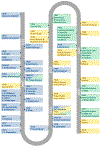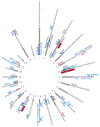Understanding, educating, and supporting children with specific learning disabilities: 50 years of science and practice
- PMID: 31081650
- PMCID: PMC6851403
- DOI: 10.1037/amp0000452
Understanding, educating, and supporting children with specific learning disabilities: 50 years of science and practice
Abstract
Specific learning disabilities (SLDs) are highly relevant to the science and practice of psychology, both historically and currently, exemplifying the integration of interdisciplinary approaches to human conditions. They can be manifested as primary conditions-as difficulties in acquiring specific academic skills-or as secondary conditions, comorbid to other developmental disorders such as attention-deficit hyperactivity disorder. In this synthesis of historical and contemporary trends in research and practice, we mark the 50th anniversary of the recognition of SLDs as a disability in the United States. Specifically, we address the manifestations, occurrence, identification, comorbidity, etiology, and treatment of SLDs, emphasizing the integration of information from the interdisciplinary fields of psychology, education, psychiatry, genetics, and cognitive neuroscience. SLDs, exemplified here by specific word reading, reading comprehension, mathematics, and written expression disabilities, represent spectrum disorders, each occurring in approximately 5% to 15% of the school-aged population. In addition to risk for academic deficiencies and related functional social, emotional, and behavioral difficulties, those with SLDs often have poorer long-term social and vocational outcomes. Given the high rate of occurrence of SLDs and their lifelong negative impact on functioning if not treated, it is important to establish and maintain effective prevention, surveillance, and treatment systems involving professionals from various disciplines trained to minimize the risk and maximize the protective factors for SLDs. (PsycINFO Database Record (c) 2020 APA, all rights reserved).
Figures




References
-
- Balu R, Zhu P, Doolittle F, Schiller E, Jenkins J, & Gersten R (2015). Evaluation of response to intervention practices for elementary school reading. Washington, DC: National Center for Educational Evaluation and Regional Assistance.
-
- Berninger VW (2004). Understanding the graphia in developmental dysgraphia: A developmental neuropsychological perspective for disorders in producing written language In Dewey D & Tupper D (Eds.), Developmental motor disorders: A neuropsychological perspective (pp. 189–233). Guilford Press: New York, NY.
Publication types
MeSH terms
Grants and funding
LinkOut - more resources
Full Text Sources
Medical
